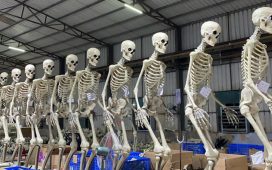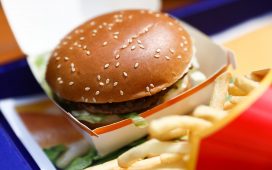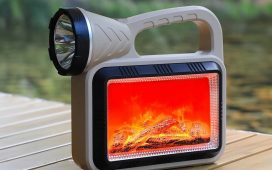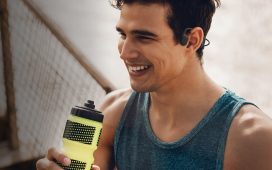
NTSB examines (fruitlessly) examine damage to the car after Uber fatality
Now that the story of the Uber robocar fatality has mostly come to an end, and in the wake of the final NTSB crash report on the Uber fatality, it is worth going over the material that leaked or was released prior to the report and caused much discussion (including by me.) Some of the leaks were broadly false. Some were confirmed. And some were not confirmed but may still be true.
LIDAR off
A very early report suggested the LIDAR might have been off. This was entirely false.
Came out of nowhere
Early examination of the dashcam video, which was released by police, made it appear as though Herzberg was difficult to see and “came out of nowhere.” In fact the street was decently lit, and any HDR camera setup would have seen her well. LIDAR and radar are not impaired by darkness.
Herzberg a false positive
“The Information” reported a leak that the system treated her as a false positive. There is a way you could treat that as true, but I would consider that false. The “true” part is that Uber has a one second delay built into the braking code, so that upon deciding it is time to brake, it waits one second, then alerts and starts braking. It has a further heuristic that says that if the braking would not entirely prevent a crash and be >0.7g, it doesn’t do it, counting on the safety driver. It is suggested that this system is in place because without it, false positives would cause to may surprise brake jabs. I don’t view that the same as saying that she was considered a false positive.
System tuned for big demo
Business Insider reported that the tuning of this system, to avoid the problem of brake jabs for false positives, was adjusted to be looser because of an impending big demo for the new CEO. The New York Times reported seing internal documents stressing the importance of this demo. The NTSB report makes no mention of this, and I would expect it to, because it goes into a fair bit of detail on this one second delay and why it’s there. The NTSB would certainly have been aware of the allegations, and it praised Uber for being highly cooperative. The tuning of the system is noted to make smoother rides, but not specifically for a demo. Lack of mention of this issue is puzzling.
Second safety driver removed to boost miles
The Business Insider report also stated the removal of the second safety driver was to log more miles, but the NTSB reported they had 40 vehicles and over 250 drivers, which is not quite enough to run vehicles 24/7 with 2 drivers, but not far off if vehicles have certain amounts of downtime. It certainly doesn’t require switching to just one.
The New York Times also reported that Uber viewed the second driver as having no safety role.
Of course, lack of mention of these issues in the NTSB report does not rule them out, but makes them less likely, as it’s highly likely the NTSB folks read the reported leaks.
Infrared cameras
Leaks received by me indicated that Uber has infrared cameras which should have seen her. There was no mention of cameras in the NTSB report.
Black coat
Leaks received by me suggested misclassification may have come because she was wearing a black coat. Both LIDAR and camera will get fewer and weaker returns from a dark black cloth, particularly at distance, thus seeing only her head, the bicycle and her legs in blue jeans. It is not suprising a system seeing only those things might not readily identify that as a pedestrian. There was no mention of this in the NTSB report, which did not go into the reasons for the misclassifications.
Car not able to identify pedestrians outside of crosswalks
This wasn’t a leak, but rather a misreading of text in the NTSB’s early release of its final report. A number of press erroneously reported that the system did not understand the idea of jaywalking, with the first possibly being this Wired story I briefly repeated this report then corrected it — the final report revealed that while the system did have some flaws related to pedestrians out of crosswalks, they did not come into play in this accident and it certainly had the ability to tag pedestrians outside of crosswalks, but failed to for other reasons.








